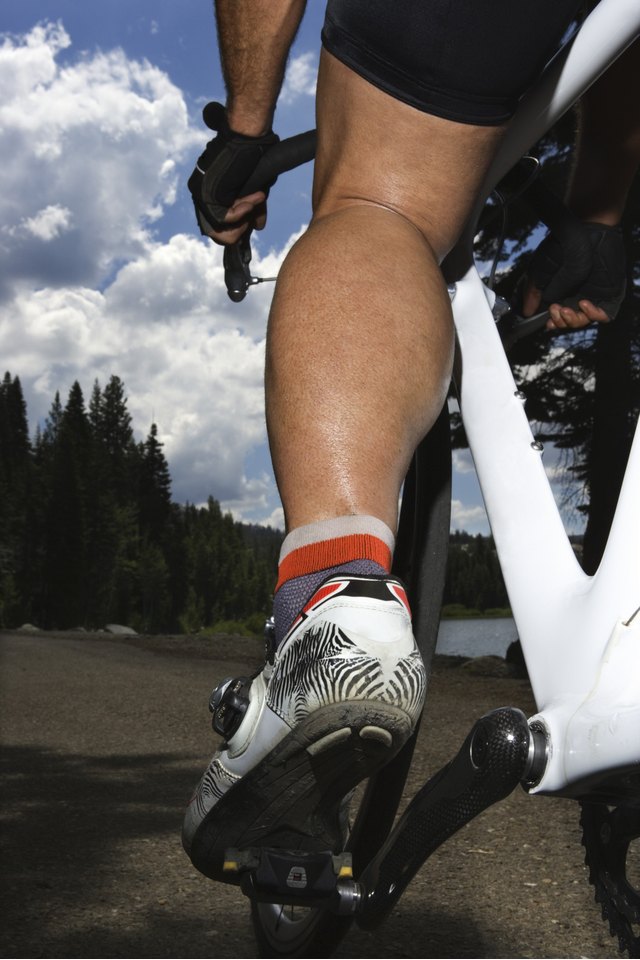Does Biking Strengthen the Hamstrings?

Bicycling is an excellent activity for training cardiovascular fitness, improving core strength and strengthening and toning leg muscles. The strength of your hamstrings is most important for pulling your legs back up to the body while pedaling. You can improve your hamstring strength on a road or stationary bike using targeted pedaling techniques.
Using Clips
If you want to effectively isolate the muscle groups that you train while bicycling, purchase clips that attach to your pedals so you can slide your feet into them and stay firmly attached to the pedals. Without using clips it is difficult to engage in a stroke that doesn't emphasize creating force from pushing downward on the pedal. Unclipped, downstroke-heavy pedaling is the least efficient motion for building hamstring strength on a bicycle. Clips allow you to more effectively control your application of force throughout the pedaling stroke, rather than being forced to rely on downstroke-generated power. This allows you to focus on muscles such as the hamstring that are of secondary importance in a standard bicycling downstroke.
Circular Stroke
If you use a circular pedaling stroke, you should see moderate gains in hamstring strength while also distributing work over your calves and quads. To perform a circular stroke, attempt to create a smooth and even application of force throughout your pedaling motion. If done effectively, this results in the speed of motion being roughly equivalent throughout the stroke. This motion is very effective for building hamstring strength if your hamstrings are relatively weak compared to your other leg muscles.
Upstroke Pedaling
If you have relatively strong hamstrings that can shoulder most of the load of pedaling and you want to continue to strengthen that muscle group, you should focus most of your application of force on pulling your foot up when it is at the lowest position in the pedaling stroke. This technique, called an upstroke, relies heavily on the hamstring to generate power. Since hamstrings are long, strong muscles, most riders can generate a great deal of power for a short amount of time using an upstroke. However, it is quite difficult to generate power solely from the hamstrings for a long period of time unless you train the stroke regularly.
Isometric Training
When performing the circular stroke or upstroke, it is important to maintain a smooth, even pace throughout the motion. For instance, when performing an upstroke, be sure that the velocity of the stroke is similar at the beginning of the stroke and the end of the stroke. Doing so isometrically trains your hamstrings and other engaged muscles, maintaining a benefit across the entire muscle. Pulling hard at the beginning of the upstroke and then gliding through the rest of the motion results in uneven development across the muscle and can result in an increased likelihood of strains and pulls. It can also result in shortening of the hamstring muscle, which limits the distance that the hamstring can stretch when executing a downstroke.
References
Writer Bio
Dan Howard is a sports and fitness aficionado who holds a master's degree in psychology. Howard's postgraduate research on the brain and learning has appeared in several academic books and peer-reviewed psychology journals.
